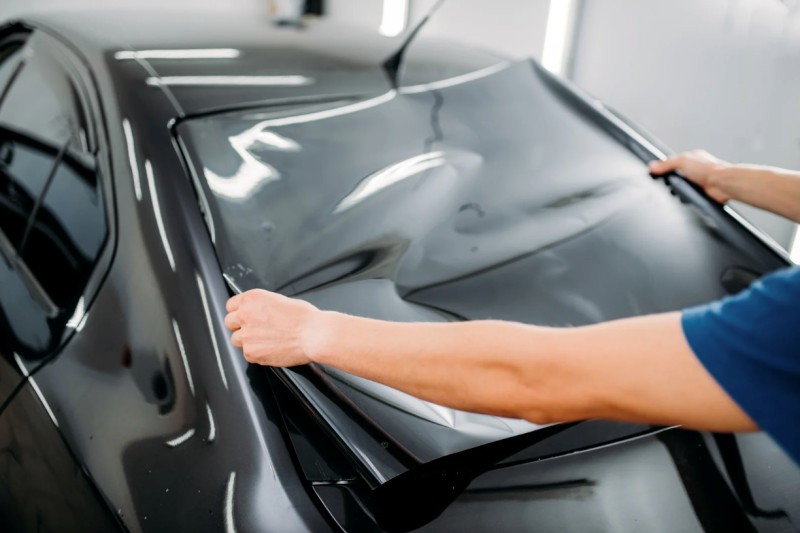Building Heat Insulation Film and Energy-Efficient Materials
What is Building Heat Insulation Film, and Why Should You Care?
So, you’ve heard about this magical thing called Building Heat Insulation Film, right? If not, don’t worry; I’m here to spill the beans! Imagine a superhero cape for your windows—yes, you heard that right! This film is designed to keep your building cozy in winter and cool in summer. Sounds like a win-win situation, doesn’t it? Well, let’s dive deeper into why this nifty invention should be on your radar.
The Science Behind Building Heat Insulation Film
Now you might be wondering, how does this film actually work? It’s all about physics, folks! This film acts as a barrier against heat transfer. Picture it like that friend who always steals the blanket during movie night—only instead of being annoying, it’s keeping your home at the perfect temperature! By reflecting infrared light and blocking UV rays, this film helps maintain energy efficiency. Who wouldn’t want lower bills while feeling comfy?
Benefits of Using Building Heat Insulation Film

Let’s chat about the perks of installing this fabulous film. First off, energy savings are no joke! With insulation like this in place, your heating and cooling systems won’t have to work overtime. Think of all those extra snacks you could buy with the money saved! Plus, it helps protect your furniture from fading due to harmful UV rays. So go ahead and flaunt that beautiful couch without worrying about sun damage!
Installation Process: Is It DIY or Call a Pro?
Alrighty then! Now that you’re sold on its benefits—how do we get this stuff installed? Here comes the million-dollar question: Do you try it yourself or hire someone? If you're feeling adventurous (and maybe slightly reckless), there are DIY kits available. Just remember—patience is key here! But if you’d rather avoid potential mishaps (like ending up with sticky fingers), calling a professional might be worth every penny.
Common Misconceptions About Building Heat Insulation Film
Let’s clear up some myths floating around out there. Some folks think using Building Heat Insulation Film will make their windows look like they belong in a sci-fi movie—totally dark and uninviting. False alarm! Most films come in various tints and shades so that you can still enjoy natural light without sacrificing aesthetics. And no, it's not going to turn your living room into an icebox either!
How Much Does It Cost? Let’s Talk Dollars!
Ah yes—the dreaded topic of money. How much will this superhero film cost you? Prices vary based on quality and installation method but think of it as an investment rather than just another expense. You’ll save on energy bills while elevating your home’s comfort level—sounds like a bargain to me!
Where Can You Buy Building Heat Insulation Film?
You’re probably itching to know where to snag some of this fantastic stuff now that you're fully convinced! Home improvement stores often carry various options or check online retailers for even more choices. Just make sure to read reviews because nobody wants subpar insulation ruining their cozy vibes!
Final Thoughts on Building Heat Insulation Film
In conclusion (drumroll please!), if you're looking for ways to enhance comfort while saving some cash along the way, consider investing in Building Heat Insulation Film. It's more than just window dressing; it's practical magic for modern living spaces! So go ahead and give your building the upgrade it deserves—you won't regret it!
Architectural Perspectives on Building Heat Insulation Film
From an architect's standpoint, Building Heat Insulation Film is not just an accessory; it’s a fundamental aspect of sustainable design. Architects are increasingly leaning toward materials that not only meet aesthetic standards but also contribute towards energy efficiency. This film aligns perfectly with the goals of modern architecture by reducing the overall carbon footprint of buildings. The reflective properties help manage indoor temperatures without relying heavily on HVAC systems, which are often energy-intensive. It’s fascinating how integrating such films into design can lead to significant energy savings over time. Moreover, architects are now considering these films as part of a holistic approach to material selection in their projects. By choosing products that enhance energy efficiency while maintaining visual appeal, they’re creating spaces that are both functional and beautiful.
Building Heat Insulation Film and Energy-Efficient Building Materials
The synergy between Building Heat Insulation Film and other energy-efficient building materials cannot be overstated. When combined with materials like insulating concrete forms or sustainable wood products, they create an environment that maximizes thermal performance. For instance, using both heat insulation film and low-e coatings on windows can enhance the overall effectiveness of the building envelope. This integration supports passive design strategies where natural elements are utilized for heating and cooling needs. As we move toward more eco-friendly construction practices, understanding how these materials work together will be crucial for future development.
| Building Heat Insulation Film | Energy-Efficient Building Materials | Energy-Efficient Materials + Modern Architecture + Heat Insulation Techniques |
|---|---|---|
| Reflective Properties | Thermal Mass | Integration of Passive Design |
| UV Protection | Insulating Concrete Forms (ICFs) | Use of Green Roofs |
| Easy Installation | Recycled Materials | Advanced Glazing Techniques |
| Cost-Effective | Sustainable Wood Products | Smart Building Technology |
| Durability | Insulation Boards | Natural Ventilation Systems |
| Aesthetic Appeal | Aerogel Insulation | Thermal Bridging Solutions |
| Energy Savings | Low-E Coatings | Building Orientation Strategies |
This table illustrates the various attributes and synergies between Building Heat Insulation Film and other energy-efficient building materials. By understanding these connections, architects can better integrate them into their designs for optimal performance.
| Technical Guide for Building Heat Insulation Film | Product Description of Energy-Efficient Materials | Industry Knowledge on Energy-Efficient Building Techniques |
|---|---|---|